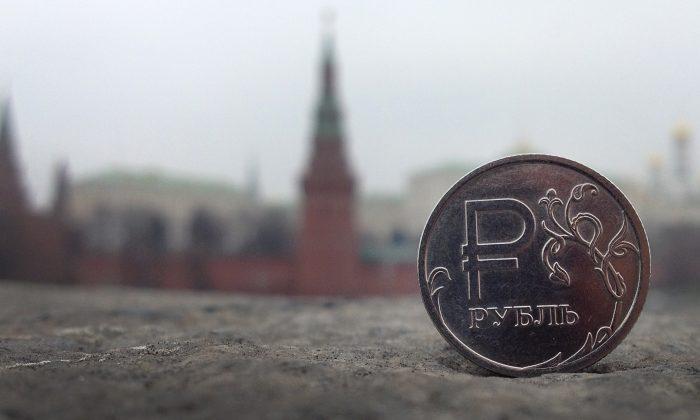At the end of last year, the collapsing ruble made headlines. This year, the soaring ruble is just going up quietly. The factors driving it up are largely the same that drove it down.
In the fall of 2014, this paper argued that collapsing oil prices and heightened geopolitical factors scared international investors out of the Russian stock market and with it out of holding the Russian ruble.
The Benchmark Russian equity index RTS dropped 55 percent from June to December and with it the ruble. It lost 45 percent of its value against the dollar over the same timeframe.

The Russian Central Bank tried to stem the flow and spent billions of dollars to prop up the ruble, to no avail.
These factors have now reversed and since February the ruble is up 38 percent against the dollar.
It seems that international investors realized that Russian equities were priced like the country was going out of business, that is, very cheap.
As many of the worst case scenarios (a full blown war in Ukraine) didn’t materialize and markets overcame uncertainty about international sanctions, they started buying Russian stocks again.
The RTS is up 33 percent for the year and the biggest appreciation in market capitalization happened in February, right after the ruble bottomed at the end of January.
A stabilizing oil price also helped (WTI is up 20 percent since its recent March dip) and so did Russian companies buying rubles for tax reasons.
The Russian central bank didn’t do much to fuel the rally. Its last intervention in the markets (Selling $690 million) came at the beginning of February, right when the ruble started to take off.
Instead, it even lowered interest rates in March to 14 percent, in a sign of confidence. It seems like spring is coming again for Russia after all (its economy narrowly avoided a recession in 2014), but not all is well.

Because of the low currency after-effect and import restrictions, inflation skyrocketed in early 2015, reaching a high of 16.9 percent year over year in March. Before it reaches the central bank target of 4 percent, the ruble will have to strengthen even further.






Friends Read Free